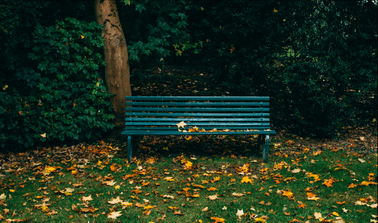
Stephanie Pincetl, Director California Center for Sustainable Cities
Institute of the Environment and Sustainability
November 13, 2017
The City of Los Angeles has a modest yet persistent program, supported by advocates, to add more parks, particularly in areas considered “park-poor”, based on some comparable metric. While it may not be obvious why voters are supporting more parks today, there is an unintended beneficial consequence- parks are an essential precursor to a denser yet livable city.
The push for more urban parks in Los Angeles will set the city up well for the greater densities that are needed. While it may seem odd for neighborhoods with single family dwellings and their own yards to wish for more park space, perhaps they are anticipating the needed gentle densification required in these vast areas of the city for the population of the future. Creating two or three story duplexes, fourplexes and sixplexes out of single story single family houses and on those lots makes sense. Streets are ample for traffic and parking, most have driveways and garages, and there is back and front yard space ripe for common use. Well-dispersed small retail on corners, including service sector businesses like lawyers, accountants, hair salons, small boutiques, limited grocery shopping and coffee shops will enable walkability and access to primary needs, and create spaces for entrepreneurs at lower rents than conventional commercial venues. Of course, this is all predicated on eliminating current parking requirements.
Rather than require onsite-parking everywhere, at all times, instead and at a certain threshold of density, the city should initiate business improvement districts (BIDs), enabling the building of district parking. Those who desire parking at their domicile could pay for the installation of mechanized parking that stacks cars using robotics, a strategy that is very economical of space. One could imagine some of the owners of the new multiple family dwelling units desiring to do so, pooling together their resources. Others will prefer the lower cost alternative of a district parking structure, equipped with carts and bike parking so residents can easily transport goods, groceries, luggage, children to and from their dwellings.
Adding parks to the mix through the use of park bonds, will be a long-term investment for these more dense neighborhoods, providing meeting places, community gardens, playing fields, and exercise areas. They will be within walkable/bikeable distances to residences, and will make for even more livable gracious neighborhoods. Densities will be higher, but limited. Buildings will house 2-6 apartments, and the neighborhoods will retain single family dwellings as well. Such densities will maintain the feeling of single family zones, their openness and low rise character. It will be a mix that enables better public transportation economies and access, and greater ability to get around without a car. One can imagine families having just one car, and using bikes, buses and walking for daily commutes. Parks will be close by, and so will basic services. Children could walk to the store, meet their parents at the local café, hang out with their friends at the park, walk or ride to school. What newly found freedom from dependency on the parents and being chauffeured here and there they will have! Streets will be configured to make the pedestrian’s needs equivalent to that of the motorist, slowing traffic and making for safe streets, and will be favorable to the addition of trees for shade and bioswales for stormwater infiltration.
All of this is in the realm of possibility and feasibility, and must occur for Los Angeles to be a livable, walkable city that has enough housing for all. It is not enough to lump giant housing complexes on large boulevard transportation routes. Those are necessary, but will not provide the housing needed, nor the types desired across the city and inhibit the complexity and diversity a city like Los Angeles needs in order to foster well-being and prosperity. As it is, young entrepreneurs find little affordable spaces for small new stores, for their artisanal production, whether a bakery or a store that sells hand-made clothes. Allowing small corner commercial sectors in residential neighborhoods could help, and foster shops oriented toward the local clientele, spurring a range of different options for shoppers specific to their local area. Residents desire walkable neighborhoods safe for their children to circulate, with enough density to support small local businesses. And the parks we are now funding and developing will provide the building blocks of sociability: places where people will gather for picnics on the weekends, sports, and strolls in the evenings. Community gardens will supplement residential front and back yards. Truly the Los Angeles parks movement is providing the foundation for livable densification that can support green infrastructure too. The path forward is clear: zoning reform to enable densification of the single-family zone and changing our approach to parking and commerce.
